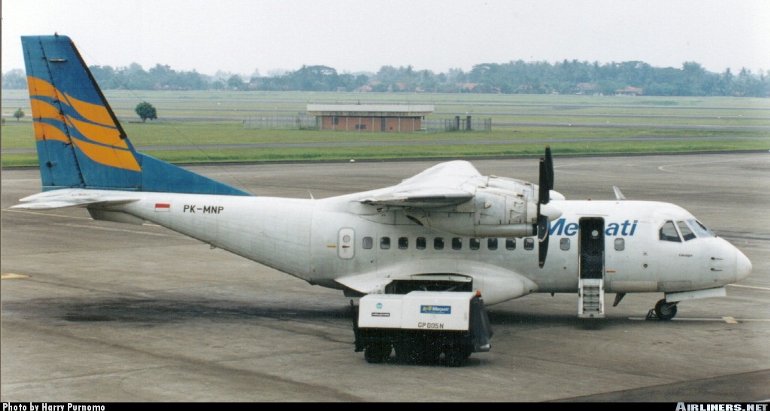Aircraft Technical Data
CASA/IPTN CN235

| Details | |
| Country of Origin | Spain and Indonesia |
| Type | Utility transport and 45 seat regional airliner |
| History | The CN235 regional airline and military tactical transport was developed and manufactured jointly by CASA from Spain and IPTN from Indonesia (the latter initially as Nurtanio, and as of October 1985 as Nusantara). A new company Airtech was formed to manage the program, but Airtech was not an aircraft manufacturer and never owned or operated any factories. Each country built one prototype, and these rolled out simultaneously on 10 September 1983. The Spanish prototype flew first, on 11 November 1983, with the Indonesian-built aircraft following on 30 December 1983. Certification by both Spanish and Indonesian authorities and first deliveries (from the Indonesian line) occurred in December 1986. Entry into commercial service was in March 1988. Final assembly lines for the CN235 are in Spain and Indonesia, but all other construction is not duplicated. CASA is responsible for the centre and forward fuselage, wing centre section and inboard flaps, and engine nacelles. IPTN builds outer wings and flaps, ailerons, the rear fuselage and the tail unit. The initial production CN235-10 was soon replaced by the CASA-built CN235-100 and IPTN's CN235-110, incorporating CT7-9C engines in place of CT7-7As, and new composite engine nacelles. Further improvements led to the CASA CN235-200 and similar IPTN CN235-220 with increased operating weights, better field performance and greater range, with structural improvements and improved leading edge flaps and rudder. The CN235-220 was certificated in March 1992. CASA and IPTN now develop their own CN235 variants independently. Other variants on the CN235 theme are the CN235 QC quick change capable of carrying passengers or freight or both; IPTN's CN235 MPA maritime patrol aircraft and CASA's CN235MP Persuader (which while primarily aimed at military customers, have customs and boarder patrol applications); and the widely ordered CN235 M multirole military freighter. CASA later developed the stretched C-295, primarily for military use. The CN235 has succeeded in achieving only a small number of commercial orders, mostly from Indonesian and Spanish operators. In contrast the CN235's spacious interior and rear loading ramp has helped it win a significant number of military orders. |
| Powerplants | Two 1395kW (1870shp) General Electric CT7-9C turboprops, driving four blade constant speed Hamilton Standard propellers. |
| Performance | CN235-100 - Max speed 509km/h (275kt), max cruising speed 454km/h (245kt). Initial rate of climb at sea level 1780ft/min. Range with max payload and reserves at 18,000ft 796km (430nm). |
| Weights | CN235-100 - Operating empty 9800kg (21,605lb), max takeoff 15,100kg (33,290lb). |
| Dimensions | Wing span 25.81m (84ft 8in), length 21.40m (70ft 3in), height 8.18m (26ft 10in). Wing area 59.1m2 (636.17sq ft). |
| Capacity | Flightcrew of two. Passenger accommodation in airliner version for 45 four abreast. Quick change convertibles can carry mixtures of passengers and LD2 or LD3 containers. Cargo version can carry four LD3s or five LD2s or palletised freight. |
| Production | Out of total orders for 230 CN235s, 47 have been for civil customers. Over 30 are currently in airline service. |
| Related Links | CASA/IPTN CN235 |
The backbone of this section is from the The International Directory of Civil Aircraft by Gerard Frawley and used with permission. To get your own copy of the book click here |
|








